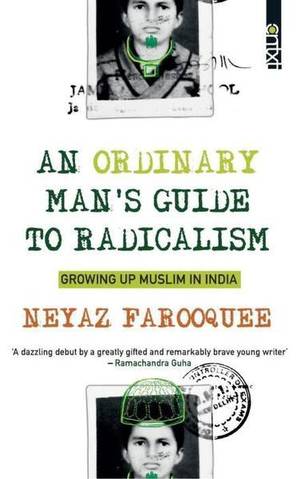By: Vidya Venkat
Neyaz Farooquee arrived in Delhi, aged 11, to study and make a better future for himself away from the poverty of his native village in Bihar. But on September 19, 2008, when the Delhi Police killed two suspected terrorists thought to be behind the 2008 Delhi serial blasts, only a few buildings away from where Farooque lived, the young IAS aspirant, then 22, saw his dreams falling apart. An Ordinary Man’s Guide to Radicalism, is an effort to provide a counter-narrative of what unfolded after the encounter took place as both the police and the media began to paint Muslim youth living in the locality as probable terrorists.
For young men such as Farooquee, struggling to make a better life for themselves, the Batla House encounter turned their trusted world of hope upside down. A simple pronouncement from the police that the alleged terrorists taken down during the encounter had disguised themselves as ‘Normal Human Beings’, cast a wide net of suspicion over the entire population of Jamia Nagar, a Muslim ghetto in Delhi providing cheap accommodation for students and families.
Switching between memories
That the author chose the genre of memoir, comprising an intimate retelling of one’s lived reality, as opposed to a more objective and distant journalistic analysis of the events of the time, works very well to deliver the purpose of writing this book: allowing readers to experience what being Muslim in India means when the state becomes complicit in minority bashing. In fact, the technique the author employs of switching between memories — of his years growing up in Delhi as a student in Jamia School and later at the Jamia Millia Islamia University and the aftermath of the encounter when the University’s students were targeted by the police — in alternate chapters, allows us the perspective of an insider and how it feels to be labelled as dangerous based on your religious identity.
Farooquee’s faithful portrayal of growing up in a Muslim family in rural India, holding ‘moderate’ values, shows how most ordinary Muslim citizens have imbibed a culture of tolerance and only aim to live in peace with other members of the society. He recounts instances such as how they packed only vegetarian meals for train journeys so as not to offend their fellow co-passengers, and how a respected elderly resident Nabib Sahab ensured no beef was slaughtered in their village in Siwan after a neighbouring village opposed the killing of the nilgai.
Targeting communities
Juxtaposing such vignettes from the lives of ordinary Indian Muslims against the frightening narrative of Islamic radicalism furthered by the security establishment helps us to see the perils of broad brushing an entire community as terrorists. He cites cases where innocent Muslim youth picked up on charges of terrorism were later let off by the courts and how evidence was manufactured by the police in many such cases to justify their actions. While the author does not rule out that there maybe a few bad eggs among the community members, he does question this targeting of entire communities by the police.
Farooquee has achieved in this book what writers such as Ta-Nehisi Coates have done for Blacks in America, making voices of the marginalised minority heard. Both the author and the publisher (the book was written using a grant from the New India Foundation) deserve praise for addressing this subject at a time when communal polarisation has deepened across the country.
Courtesy The Hindu




